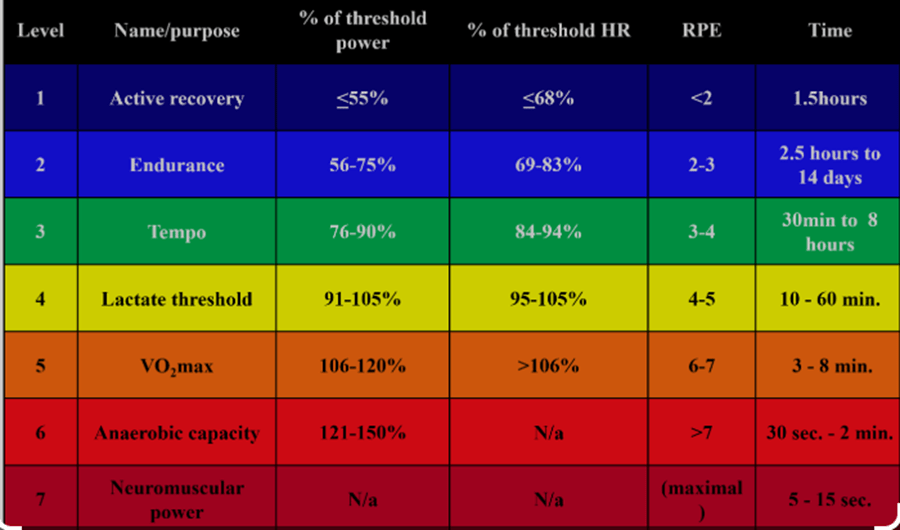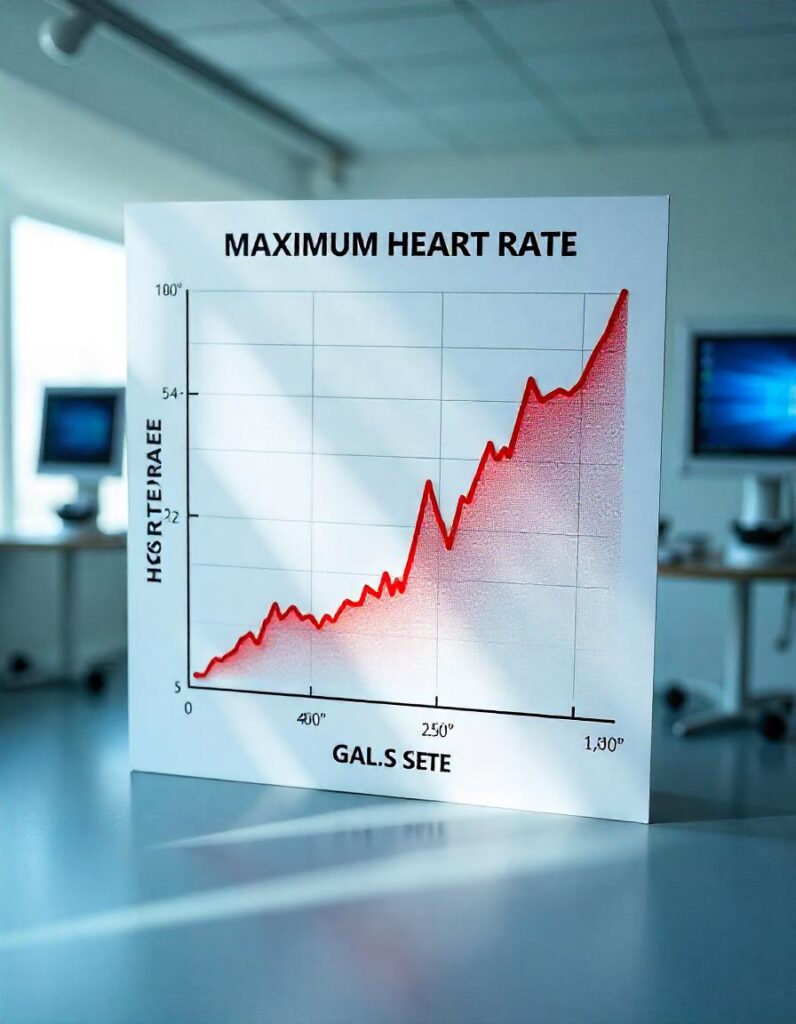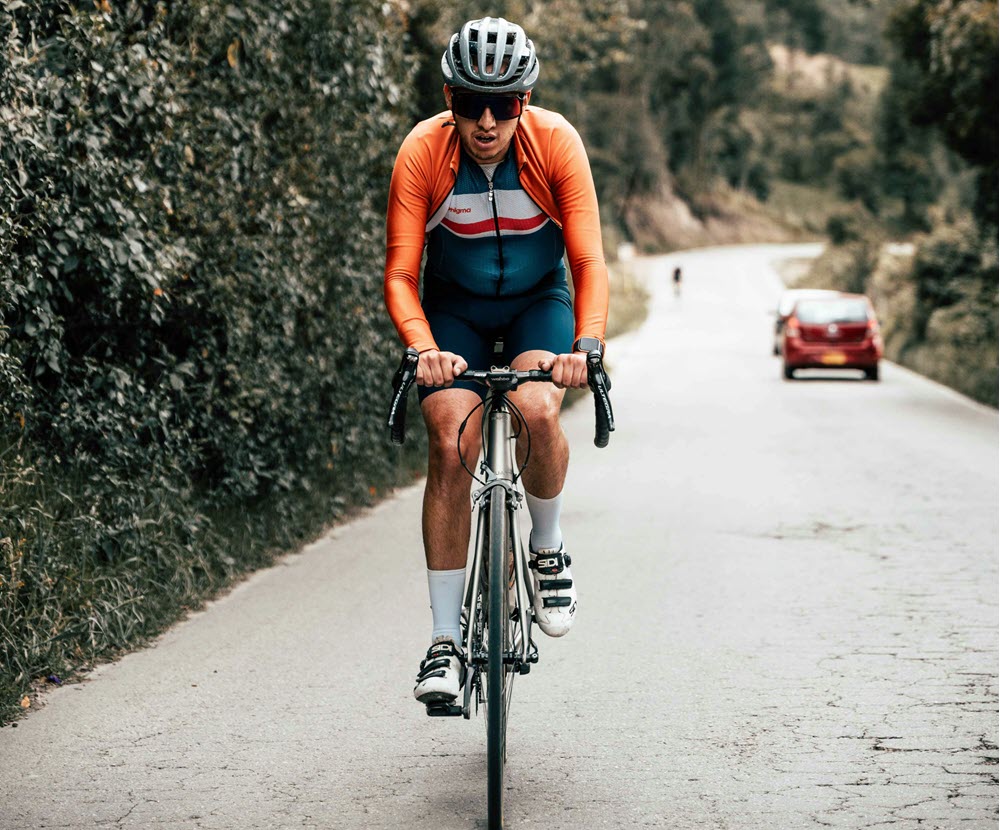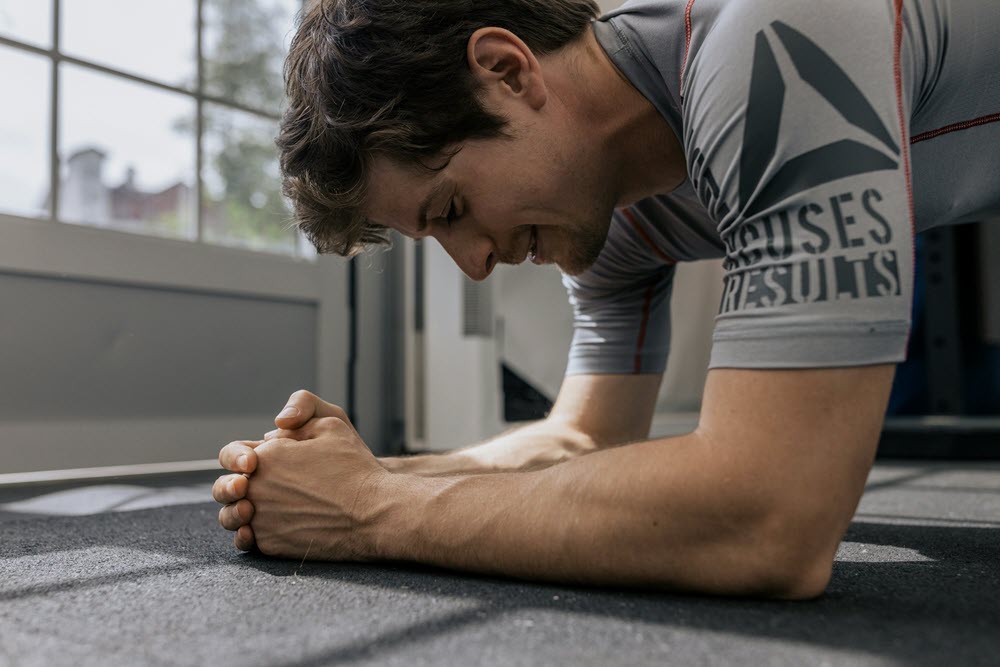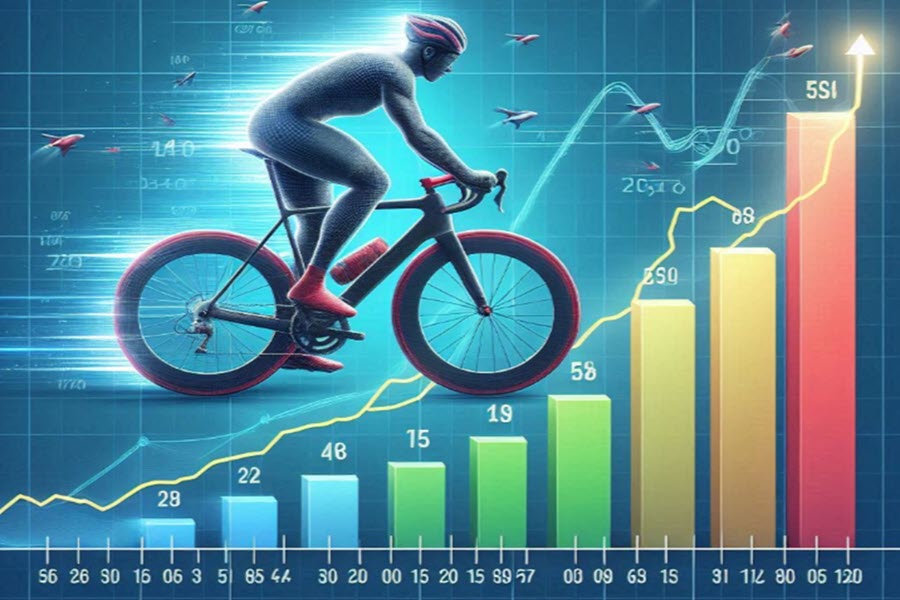For cyclists, achieving a high cycling power output is a key goal. Many dedicated cyclists spend considerable time and effort trying to improve their power output so that outdoor rides become easier. The goal is to ride faster for longer while using less energy, increasing efficiency. One method to improve your cycling power is the 75% rule. This training principle can help you to improve your cycling.
Contents
- 1 WHAT IS THE 75% RULE?
- 2 Fuel Better, Ride Longer
- 3 WHY IS THE 75% RULE EFFECTIVE FOR IMPROVING CYCLING POWER?
- 4 EXERCISES TO COMPLEMENT THE 75% RULE AND IMPROVE CYCLING POWER
- 5 Never Miss Another Ride
- 6 TECHNIQUE AND CORE STABILITY
- 7 Ignite Performance, Burn Fat, Reveal Results
- 8 OTHER FACTORS
- 9 POWER TO WEIGHT RATIO
- 10 CONCLUSION
WHAT IS THE 75% RULE?
The 75% rule is a foundational training methodology dictating that 75% of your weekly cycling volume should be performed below 75% of your maximum heart rate (MHR). This approach to cycling power development corresponds to spending approximately three-quarters of your training hours in heart rate Zones 1 (50-60% MHR) and 2 (60-70% MHR), which represent aerobic, low-intensity effort levels.
When mapped to power zones, this translates to Zone 1 (<55% FTP) and Zone 2 (56-75% FTP), focusing on building aerobic capacity and mitochondrial density. The remaining 25% of your training should be allocated to higher-intensity work in heart rate Zones 4 (80-90% MHR) and 5 (90-100% MHR), corresponding to power Zones 4 (106-120% FTP) and 5 (>120% FTP), where substantial physiological adaptations occur through anaerobic system development.
Fuel Better, Ride Longer
Optimum Nutrition Amino Energy + Hydration delivers BCAAs and electrolytes in one easy mix. Support muscle recovery while staying hydrated on every ride. 5,000 sold. Power your performance today here!
By adhering to this polarized training distribution and accumulating sufficient training load, athletes typically experience significant improvements in sustainable cycling power output and metabolic efficiency.
WHY IS THE 75% RULE EFFECTIVE FOR IMPROVING CYCLING POWER?
The 75% rule works so well for boosting cycling power because it creates the perfect balance between training hard enough to improve and easy enough to recover properly. When cyclists spend most of their training time at lower intensities (below 75% of their maximum heart rate), their bodies build more mitochondria (cellular powerhouses) and develop better blood flow to muscles without overtaxing their nervous systems.
The predominance of Zone 1-2 training (below 75% MHR or approximately 75% FTP) optimizes fat oxidation pathways, spares glycogen stores, and promotes cardiovascular adaptations without accumulating excessive training stress. Attempting to conduct the majority of training sessions at threshold or supramaximal intensities triggers a cascade of inflammatory responses, elevates cortisol levels chronically, and diminishes glycogen resynthesis rates, ultimately compromising power production capacity and increasing vulnerability to overtraining syndrome, upper respiratory infections, and musculotendinous injuries.
The polarized approach inherent in the 75% rule creates the optimal physiological environment for sustainable cycling power development while maintaining a favorable anabolic-catabolic balance. By allocating only 25% of training volume to high-intensity efforts (Zones 4-5), athletes can strategically target neuromuscular recruitment patterns, lactate buffering capacity, and VO2max improvements without exhausting adaptive reserves.
This distribution enables sufficient recovery between high-intensity sessions while continuously reinforcing aerobic foundations, resulting in measurable improvements in functional threshold power (FTP) and power-to-weight ratio. The judicious application of intensity creates a complementary relationship between endurance-building low-intensity work and performance-enhancing high-intensity training, allowing cyclists to progressively elevate their sustainable power output while minimizing the physiological cost of adaptation.
EXERCISES TO COMPLEMENT THE 75% RULE AND IMPROVE CYCLING POWER
Climbing Hills
Strategic implementation of specific training modalities can significantly enhance the effectiveness of the 75% rule for cycling power development. Hill repeats and gradient-based intervals serve as exceptional training stimuli by simultaneously challenging cardiovascular capacity and neuromuscular recruitment patterns.
When executed within the 25% high-intensity allocation, these ascent-focused efforts induce substantial physiological adaptations through increased muscle fiber recruitment, enhanced lactate clearance mechanisms, and improved force production throughout the pedal stroke. The variable resistance encountered during climbing necessitates greater torque application, effectively strengthening the posterior chain musculature while improving proprioceptive awareness during power production.
Integrating structured hill work—ranging from shorter, steeper efforts (6-12% gradient) to longer, moderate climbs (4-6% gradient)—creates mechanical overload that translates directly to improved cycling power output on varied terrain.
Ride Further with Faster Cyclists
Deliberate integration of group rides with stronger cyclists and focused indoor training sessions creates complementary training effects that optimize cycling power development. Riding with more powerful cyclists introduces natural intervals and sustained efforts slightly above personal thresholds, creating physiological stress that drives adaptation without psychological fatigue. Meanwhile, controlled indoor environments facilitate precision-based workouts targeting specific power metrics and pedaling mechanics.
Never Miss Another Ride
Transform any bike into your personal fitness studio with an indoor trainer. Ride year-round regardless of weather, time, or daylight. Today’s top models offer silent operation, smart resistance, and immersive virtual worlds to explore. Discover the best-selling indoor trainers here
Indoor Bike Training
Using smart trainers or ergometers allows cyclists to execute exact power-based intervals, maintain consistent resistance regardless of terrain, and analyze real-time metrics such as torque effectiveness, pedaling smoothness, and left-right balance. The elimination of external variables (traffic, weather, terrain) during indoor sessions enables concentrated focus on biomechanical efficiency, aerodynamic positioning, and pedaling economy.
These are all critical factors in translating physiological capacity into optimal cycling power output. When properly integrated within the 75/25 intensity distribution, these complementary exercises systematically address both the cardiovascular and neuromuscular components essential for sustained power production improvements.
TECHNIQUE AND CORE STABILITY
A biomechanically optimized position and robust core stability serve as foundational elements in maximizing cycling power transmission from physiological capacity to mechanical output. Proper technique encompasses optimal joint alignment, efficient force vector application, and synchronized muscle recruitment patterns throughout the pedal stroke. When cyclists develop refined neuromuscular coordination and proprioceptive awareness, they eliminate power-wasting movements such as excessive lateral hip rocking, suboptimal knee tracking, and inefficient foot articulation during force application phases.
The technical proficiency allows for targeted activation of prime movers like the gluteus maximus, quadriceps, and hamstrings while minimizing parasitic muscle engagement that contributes to premature fatigue without enhancing cycling power production. The precision of movement extends to upper body positioning, with scapular stabilization and relaxed shoulder girdle positioning reducing aerodynamic drag while facilitating deeper respiratory excursion.
Core stability functions as the critical link in the kinetic chain, facilitating optimal power transfer from the torso to the pedals while maintaining positional integrity throughout varying effort levels. A systematically strengthened core—including the transversus abdominis, multifidus, erector spinae, and oblique muscle groups—creates a rigid platform from which the lower extremities can generate force against the pedals without energy dissipation through trunk oscillation.
The stabilized pelvis enables more effective hip extension during the power phase of pedaling, directly translating to increased cycling power output, particularly during sustained threshold efforts or explosive accelerations. Implementing targeted core conditioning exercises such as planks, bird-dogs, dead bugs, and rotational movements 2-3 times weekly complements on-bike training by reinforcing the musculoskeletal framework responsible for translating physiological capacity into mechanical advantage.
This integrated approach to technical refinement and core development optimizes power transfer efficiency, allowing cyclists to extract maximum cycling power from available metabolic resources.
Ignite Performance, Burn Fat, Reveal Results
C4 Ripped Sport combines powerful pre-workout energy with targeted fat-burning ingredients in one NSF Certified formula. Sugar-free and designed for both men and women, it delivers explosive workouts while supporting your body composition goals. Elevate your training and transform your results today!
OTHER FACTORS
Multiple environmental and physiological variables significantly influence cycling power production beyond training stimulus and technical execution. The power-to-weight ratio remains a fundamental determinant of performance capacity, with leaner body composition typically correlating with enhanced climbing ability and acceleration characteristics. This relationship explains why elite cyclists meticulously manage body mass while preserving muscular development essential for cycling power generation.
The aerodynamic profile created by riding position dramatically affects power requirements, with research indicating that optimizing frontal area through appropriate handlebar height, torso angle, and elbow positioning can reduce drag coefficient by 15-20%, effectively increasing available cycling power at given metabolic cost. These positioning optimizations must balance aerodynamic efficiency with sustainable comfort to prevent biomechanical compensation patterns that compromise power transmission.
External resistance factors create substantial variability in the effective application of cycling power across different riding conditions. Surface gradient represents a significant determinant, with each percentage point of incline requiring approximately 10 watts of additional cycling power for a 75kg rider at moderate speeds.
Similarly, atmospheric conditions—particularly wind resistance—exponentially increase with velocity, demanding disproportionately greater power output as speeds increase beyond 30kph. Tire selection introduces another critical variable through rolling resistance characteristics, with research demonstrating performance variations of 5-15 watts between different tire models and inflation pressures at identical velocities.
Advanced cyclists optimize these factors through equipment selection, tactical positioning (particularly in headwind conditions), and strategic effort distribution based on gradient changes. Understanding these multifactorial influences enables cyclists to effectively modulate their power application according to specific conditions, maximizing performance outcomes from available physiological capacity while minimizing unnecessary energy expenditure.
POWER TO WEIGHT RATIO
The power-to-weight ratio represents a critical performance metric in cycling, calculated by dividing a rider’s maximum sustainable cycling power output (typically measured in watts) by body mass (in kilograms). This watts-per-kilogram value serves as a standardized indicator of climbing ability and acceleration potential across different body types.
Elite professional cyclists typically generate 5.5-6.5 w/kg at threshold intensity, while recreational enthusiasts might operate in the 2.5-4.0 w/kg range. This fundamental relationship explains why lighter cyclists with comparable absolute power values ascend gradients more efficiently than heavier counterparts, as gravitational resistance increases proportionally with mass.
The significance of optimizing power-to-weight ratio extends beyond climbing performance to nearly all aspects of cycling dynamics. Accelerations, maintaining position in crosswinds, and overcoming rolling resistance are all influenced by this relationship between cycling power production and mass. Improving this ratio can be achieved through either increasing functional threshold power through structured training or reducing non-functional body mass while preserving muscle tissue essential for force production.
The most effective approach typically combines both strategies, implementing periodized training to enhance mitochondrial density and force production while simultaneously managing nutritional intake to optimize body composition. This dual-focused methodology enables cyclists to systematically improve their power-to-weight ratio, directly enhancing performance capacity across varied terrain profiles and competitive scenarios.
CONCLUSION
Systematic improvement in cycling power requires the deliberate application of training principles within a structured framework of physiological adaptation. The 75% rule provides this framework by establishing optimal intensity distribution that balances stress and recovery cycles necessary for progressive development.
Consistent application of this methodology—combined with technical refinement, core stability development, and attention to external variables—creates the comprehensive approach required for meaningful performance enhancement. The commitment to regular training across properly distributed intensity zones fundamentally transforms metabolic efficiency, muscular capacity, and neuromuscular coordination essential for cycling power production.
The evidence-based approach of allocating 75% of training volume to lower-intensity efforts facilitates the aerobic foundation upon which higher-level performance capabilities are constructed. This methodical approach enables cyclists to progressively elevate their functional threshold power while concurrently optimizing body composition, thereby enhancing the critical power-to-weight ratio that defines climbing capability and acceleration characteristics.
Through patient application of these principles, cyclists at all performance levels can realize their physiological potential and experience the satisfaction of enhanced power production capabilities.
 |
 |
We earn from qualified Amazon purchases with NO cost to you. ANY item that you need or were going to purchased anyway through any of our links, helps support this site. Thank you for your support!
If you enjoyed learning about this week’s featured bicycle, don’t miss out on more classic bike goodness! Visit our website at classicjapanesebicycles.com for an extensive collection of timeless Japanese bikes and their unique stories. Plus, check out our YouTube channel, Bicycle Restoration Man, for detailed restoration videos and showcases of our finished projects. Subscribe and join our community of bike enthusiasts!



